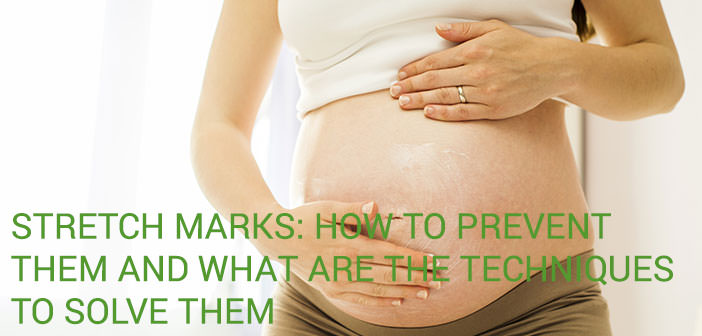Stretch marks: How to prevent them and what are the techniques to solve them
What are the causes of stretch marks? How to prevent and treat them? Discover the most-used methods.
The cutaneous stretch marks are unsightly forms of atrophy of the epidermal and dermal layer of the skin, which are more common in women, but also many men are affected. The appearance of stretch marks resembles that of small scars. They are the result of the injury of a flap of skin that, during traction, has lost its average elasticity.
Stretch marks can be of three colors: purple, red, or white.
Table of Contents
The causes of stretch marks
The causes of stretch marks are many, and all depend on the same factor: the skin’s lack of elasticity. Stretch marks occur, for example, in the case of a sudden change in body weight (flash diets, a sudden increase in body mass, weight training, pregnancy, … ).
How to prevent stretch marks
- Cold sponging: Dab the skin with sponges soaked in cold or slightly warm water, making slight rotational movements on the legs and abdomen, reactivating the circulation in the tissues, and promoting the skin’s elasticity.
- The elasticizing creams: Verbena and Luppolo in creamy or gel formulations prevent the formation of stretch marks, but you have to be careful to use them every day, morning, and evening.
- The right diet: Take elements with a high content of vitamin E (such as avocados, broccoli, fish oil, legumes, walnuts, and eggs) and vitamin C (such as citrus fruits, chestnuts, cauliflowers, strawberries, kiwi, potatoes, parsley, peppers, and currants).
Vitamin E and vitamin C perform essential skin functions because they fight free radicals and promote cell turnover. Drinking a lot of water is necessary to ensure constant hydration to the tissues and to remove the risk of stretch marks.
How to cure stretch marks
- Homeopathic mesotherapy: this practice consists of injecting small amounts of homeopathic medicines to the patient under the skin or intradermally. This practice is painless but must be repeated in various sessions (about 12). The treatment is exceptionally safe and effective and has no contraindications. The injected homeopathic product reduces water retention, draining the tissues from the slag, improving circulation.
- Glycolic acid: there are creams and ointments based on glycolic acid. These products should be spread on parts of the body with stretch marks but should be used carefully since glycolic acid can burn the skin. The glycolic acid performs a superficial peeling and intensely stimulates the production of new collagen and elastin fibers. This product is often used in combination with a cream based on tretinoin, useful to prepare the skin for the use of glycolic acid. You should consult an experienced doctor before proceeding with the use of this substance as it may result in unsightly scarring and intensify the skin’s sensitivity under sun exposure.

